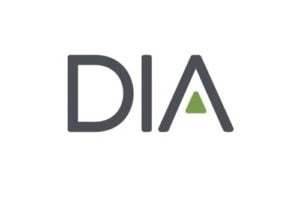In conversation in the October edition of DIA’s Global Forum magazine, Canadian Agency for Drugs and Technologies in Health (CADTH) CEO Suzanne McGurn highlights how the work of HTA bodies like CADTH has evolved, the most significant challenges in their work, international collaboration, and RWE integration.
Health technology assessment (HTA) is the evaluation of the clinical, economic, and humanistic value of a new product compared to existing approaches to care. In Canada, as in many other jurisdictions (such as the UK, Australia, France, and Germany), health technology reviews are used to support decisions by provincial payers about drug funding and appropriate use.
Judith Glennie, Global Forum regional editor for Canada, discusses the concept of HTA and its place in the therapeutic development of pipeline products—first on a global basis and then within the context of Canadian and other international jurisdictions—with Suzanne McGurn, president and chief executive officer of the Canadian Agency for Drugs and Technologies in Health (CADTH), in the below Q&A. CADTH is an independent not-for-profit organization responsible for providing Canada’s healthcare decision makers with objective evidence about the optimal use of drugs and medical devices, where Suzanne has served as president and CEO since July 2020.
Judy Glennie: Suzanne, if you had to explain it to a lay person, why would you say the work of health technology assessment agencies like CADTH is important?
Suzanne McGurn: I like to compare health technology assessments to things we’re all very familiar with. If we’re looking into which restaurant to go to, we check to see how many stars there are. If we’re looking to buy something, whether it’s a new car or appliances for our house, we look to find out how they are rated for safety or energy usage or environmental impact. How does it work? How reliable is it? What are its repair costs? All of us are very familiar with making decisions about what to buy based on using the best information available. For example, people are familiar with Consumer Reports® and how they help individuals with informing their own decisions, particularly about those large purchases. I think of HTA and the work we do like those reports: they help decision makers who face the same challenges and difficult choices that we all face with finite resources. There are competing demands on the resources that are available. People want to know that these decisions are based on the best information and not undue influence or marketing.
Agencies like CADTH help bring science, methodology, and rigor to the decision-making process. We review information similar to Consumer Reports® and make the best recommendations possible. This could be about pharmaceutical products, it could be about new cell and gene therapy, it could be about new devices, and it could be about new interventions or models of care. From my perspective, the role that CADTH plays is to lay a foundation of standardized, credible information for decision makers to use in their decision making. It’s not the only piece of information at hand, but our HTA work helps bring consistency to the process. We help decision makers, and hopefully the public, understand what the current evidence tells us and, importantly, what we don’t yet know.

Suzanne McGurn, CEO, CADTH
JG: What is the greatest challenge that HTA bodies like CADTH face as they work to evaluate and provide advice on the use of new products?
SM: It is daunting to step into a leadership role for an organization focused on evidence in the midst of a pandemic. Less than 18 months ago, many of us didn’t know much about Scientific Tables or modeling. These are dinnertime discussions now within many households. One of the greatest challenges we face is the changing landscape of evidence and, probably for the first time, a real recognition of how fast or slow evidence evolves. And the changing nature of evidence naturally leads to lots of questions. We have drugs and products coming to us with higher uncertainty than we’ve ever seen. We see complexity, like new gene therapies or very targeted treatments, rapidly emerging in the pipeline. Just a few years ago, those seemed quite far from frontline clinical delivery, but now they’re here. So, a challenge for us is keeping pace with robust pipelines and effectively managing the increasing number of products coming through CADTH for assessment.
Another shifting paradigm: The discussion just a short time ago was centered on speed versus quality, but where we’re really moving to is more like a Triple Aim: How do we continue to be efficient, maintain quality, and ensure that effective products get to patients as quickly as possible? And coupled with that: When products arrive with limited evidence and questions remain about the benefits of treatment and patient outcomes, how do we continue to generate real-world evidence to determine if we should continue using those products or if other products should move into that space? And visa-versa: When should older “tried and true” products remain the most effective intervention rather than new, assertively marketed products? And lastly, and the one that I wouldn’t have thought about a short time ago, is our ability to continue to bring expertise and talent to the work we do at CADTH. As organizations are changing in the post-pandemic world, we’re seeing an in-demand and very mobile scientific community, so it will be important for HTA organizations to effectively support their teams while bringing in new scientific talent to support our evolving work.
To read the full article, visit the DIA’s Global Forum website here



